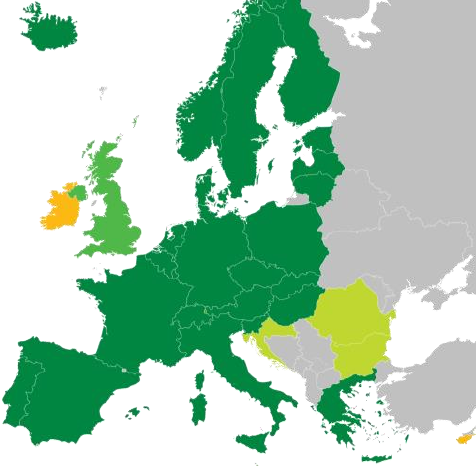With new regulations, the EU Police Agency will soon have access to many millions of alerts and searches, including fingerprints and facial images. The function is part of the “2020+ Strategy”. Connection to other information systems is already being planned.
Europol will be connected to the Schengen Information System (SIS II) from the end of this year. Access for the Hague-based police agency is governed by three new rules for the Schengen Information System. Europol has read-only access. As an official participant, however, the Agency can use all alerts contained therein for its own purposes.
SIS II is the largest and most widely used search database in the European Union. 26 EU Member States participate, as well as Iceland, Norway, Liechtenstein and Switzerland. The database currently contains more than 82 million entries. The majority are objects such as stolen or missing vehicles and identity documents. According to the European Agency for the Management of Large IT Systems (eu-LISA), which manages the SIS II, it was searched more than six billion times in 2018, compared to five billion the previous year.
German police forces are power users
In future, Europol will even be allowed to make mass queries in which, for example, a whole list of personal data is compared with SIS II. The police agency may also use any additional information that may accompany an alert. Corresponding provisions are now to be laid down in the SIRENE Manual. All contact points of the national police authorities are organised in the SIRENE network. Europol also becomes part of SIRENE.
Since the end of last year, national authorities have been obliged to leave a warning message in SIS II for all persons in connection with terrorist offences. The new marker “terrorism-related activity” is available for this purpose. If a national police authority subsequently encounters a person at a border or traffic control who has been marked accordingly by another EU Member State, it must inform Europol of the time and course of the control.
Drastically increased volume of information

Even if there is a hit in SIS II as part of an investigation, Europol wants to know about it immediately. However, there is still no definition of who should actually inform the police agency: The authority that found the hit or the authority that issued the alert. The European Commission intends to regulate the relevant details in an implementing decision soon.
The new function will result in a significant increase in the volume of information both in the Member States and at Europol. It is therefore being debated whether all other SIRENE contact points will also be informed about hits on “terrorist activity” as originally planned. In this way, all Member States would be able to observe the person immediately or intercept their telecommunications.
New: “Inquiry check”
In addition to EU arrest warrants, SIS II also enables alerts to be issued without arrest. These are so-called “discreet” or “specific checks”. “Specific checks” are carried out in a control under the eyes of the person concerned, including a search of luggage or the vehicle in which he or she is travelling. In the case of a “discreet check”, the police department issuing the alert is secretly informed of the person’s arrival.
One of the innovations in SIS II is the so-called “inquiry check”. Persons found during a control may therefore be questioned by border or police officers on the basis of information or questions entered into the SIS II by the authorities issuing the alert. The investigation request thus complements the “specific check”, which may not be carried out in some countries for legal reasons.
Investigation using biometric data
Since last year, SIS II has also included a fingerprint system that enables searches for unknown persons or crime scene traces. Currently, only about half of all EU Member States are connected to this AFIS, and by the end of 2020 all countries must have joined.
SIS II may now also contain information on persons and biometric data originating from third countries. In order to process them, national police authorities must have concluded an agreement with the relevant government. The submitting police authorities are also responsible for deleting an alert. There is currently a debate as to whether organisations such as Interpol or the Western Balkans network SELEC may also enter data into SIS II.
Europol can also access this data from third countries. In contrast to the national police authorities, the police agency may even pass on information from SIS II to non-EU authorities, but only after the EU Member State issuing the alert has given its consent. In this way, Europol is to become a worldwide “hub” for the exchange of criminal police information. Europol has defined details in its “2020+” strategy.
Profiling of travellers
By providing access to SIS II, Europol intends to profile the movements of those persons who are already stored in Europol files. The Agency will also use the information to produce analyses and situation reports which can be accessed by Member States.

The European Commission has long been planning to connect to other information systems. For example, Europol wants access to the EU passenger data collection system (PNR) and the new Entry and Exit System (EES), which from 2023 will require biometric data from all travellers at the EU’s external borders. According to the plans, the Police Agency could also participate in the extended Prüm information exchange for facial images. Finally, Europol intends to search the Eurodac fingerprint database.
Europol is also working to make better use of the Visa Information System (VIS), according to a biennial report. A new biometric system, which also processes facial images, is to be set up in The Hague for 30 million Euros. With this Automated Biometrics Identification System (ABIS), Europol will be able to compare its own holdings with VIS and SIS II.
Image: Sören (CC-BY-SA 2.0).




